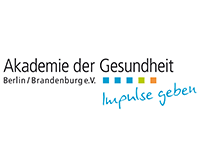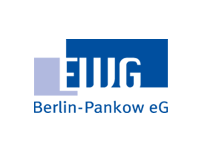Your selection
Research / 24.07.2022
Strengthening the immune response to blood cancer
Armin Rehm and Uta Höpken want to improve our immune defenses against cancer. They have recently shown in human cells what was previously only possible in mouse models. Their findings, published in Molecular Therapy, have raised the chances of a highly effective immunotherapy being developed for blood cancer.
For patients with lymphoma, multiple myeloma, or certain types of leukemia, treatment with chimeric antigen receptor T cells (CAR T cells) is sometimes the last chance of overcoming the cancer. The treatment involves taking T cells from the patient’s blood and adding artificial receptors – the CARs – to them in the lab. As the guards of our immune system, T cells are on permanent patrol in our blood vessels and tissues, where they hunt down foreign structures. Equipped with CARs, T cells can also detect very specific surface structures on cancer cells. Once the CAR T cells are returned to the patient by infusion, they circulate in the body as a kind of living drug that can bind to very specific tumor cells and destroy them.
The engineered immune cells remain in the body permanently and multiply. If the cancer flares up again, they’ll go back into action. That’s the theory, at least. But in practice, many patients still relapse. This is because the tumor cells can outwit the CAR T cells by producing more of the protein EBAG9 – and by causing the T cells to produce more of it, too. In T cells, EBAG9 inhibits the release of cytotoxic enzymes, which slows the desired immune response.
A month earlier, a team led by last authors Dr. Armin Rehm and Dr. Uta Höpken from the Max Delbrück Center for Molecular Medicine in the Helmholtz Association (MDC) showed in the journal JCI Insight that shutting down the EBAG9 gene in mice led to a sustained increase in the immune response to cancer. The mice also developed more T memory cells. These cells are part of our immunological memory, which allows our immune system to respond better to a cancer antigen after encountering it previously.
Now the researchers have also shown these key findings in vitro, in human CAR T cells. Writing in Molecular Therapy, the team says that this is the decisive step on the road to therapeutic use. “Shutting down EBAG9 allows the body to eradicate tumor cells earlier and more radically. As well as achieving longer-lasting therapeutic success, this could also create a real chance of cure,” says Rehm.
Releasing the brake for immunotherapy
As soon as the EBAG9 gene was discovered, researchers recognized that it played an important role in cancer. But it took a long time to identify what that role actually was. When the MDC team started working on it in 2009, they found that mice without the gene dealt with bacterial and viral infections much better than mice with the gene, and that they formed more T memory cells, which are of particular interest in tumor biology.
Then in 2015, lead author Dr. Anthea Wirges succeeded in curbing synthesis of the EBAG9 protein using microRNA. For the latest study, she used microRNA to cultivate “EBAG9-silenced” CAR T cells with different human leukemia or lymphoma cells. Just like in the mouse model, the silencing reduced tumor growth much more. Relapses also only developed much later.
“Releasing the EBAG9 brake allows the genetically engineered T cells to release more cytotoxic substances. However, they don’t cause the strong cytokine storm that is typically a side effect of CAR therapy,” says Wirges. In fact, the risk is minimized because fewer cells are used. “Switching off the immune brake works across the board. We can do it with every CAR T cell that we produce – regardless of which type of blood cancer it targets.
Clinical studies are the next step
However, the first-line therapy for blood cancer will remain chemotherapy combined with conventional antibody therapy, as many patients respond very well to this. “CAR therapy only comes into play if the cancer returns. It’s very expensive because it’s an individual cellular product for a single person,” says Höpken. And a single treatment with that product can save a life.
The EBAG9 work shows how important perseverance and patience are for researchers. Wirges was motivated by the prospect of her work having a real chance of clinical application. Rehm adds: “Projects like this allow you to get to grips with a technique in basic research and then apply everything in translational research – right up to toxicological screening for the regulatory processes.” Their project has now reached this last stage: The researchers will present their concept to the Paul Ehrlich Institute, Germany’s biologics approval agency, in November.
Thanks to their findings from animal models and the in vitro experiments using human cells, the team now knows that releasing the EBAG9 brake is highly effective and doesn’t cause any more side effects than conventional CAR T therapy. “We now need bold clinicians and a partner for financing the clinical studies,” says Rehm. If everything goes well, the therapy using EBAG9-silenced CAR T cells could be available to patients in as little as two years’ time.
Text: Catarina Pietschmann
Source: Press Release MDC
Strengthening the immune response to blood cancer
Overview News
News Buch Berlin
Eckert & Ziegler Achieves Further Earnings Growth and Double-Digit Sales Growth in the Medical Segment
Eckert & Ziegler SE (ISIN DE0005659700, TecDAX) increased sales in the first nine months of 2025 by 4% to €224.1 million compared to the same period last year. EBIT before special items from continuin...
more ...T-knife Therapeutics Presents Preclinical Data on PRAME-Targeted TK-6302 Highlighting its Potential as a Promising, Category-leading Therapy
Comprehensive TK-6302 data demonstrate preclinical efficacy and safety, supporting clinical readiness, alongside established scalable manufacturing. TK-6302 Clinical Trial Application planned in Q4 20...
more ...Why APOE4 raises Alzheimer’s risk
Researchers at the Max Delbrück Center and Aarhus University have found a mechanism through which the gene variant APOE4, long linked to a high risk of developing Alzheimer’s disease, impairs neuronal...
more ...Events Buch Berlin
16.12.2025, 15:30
Weihnachtliche Führung durch die einzigartige Sammlung historischer Mikroskope auf dem Campus Berlin-Buch
Lernen Sie die Anfänge der Berliner Mikroskop-Produktion und ihren Einfluss auf die moderne Biomedizin kennen - unter anderem auf die medizinische Forschung in Berlin-Buch!
more ...16.12.2025, 16:30
Invitation: Christmas tour of the unique collection of historical microscopes on the Campus Berlin-Buch
Discover the beginnings of Berlin’s microscope production and its influence on modern biomedicine. Neuroscientist Prof. Dr. Helmut Kettenmann will guide you through the microscope exhibition at the Ma...
more ...06.01.2026, 16:00
Vorlesung und Lehrerfortbildung: "Wenn das Immunsystem das Gehirn angreift – Autoimmunerkrankungen des zentralen Nervensystems"
Vorlesungsreihe: Neue Wege in der Biomedizin: Aktuelle Forschungsthemen vom Campus Berlin-Buch. Für Lehrkräfte, Schülerinnen und Schüler sowie Interessierte.
more ...






